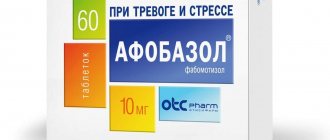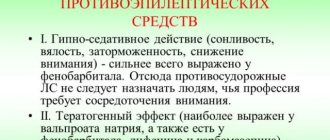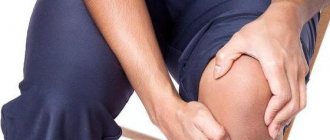Author
Egamberdiev Shavkat Makhmudovich
Doctor
Endoscopist
until February 28
We're giving away RUR 1,000 for all services per visit in February More details All promotions
Colonoscopy
(
fibrocolonoscopy
) is an endoscopic examination of the lower intestine. Unlike retroromanoscopy, colonoscopy allows you to get an idea of the condition of not only the rectum, but also the colon.
Colonoscopy is performed using a colonoscope, a special device that is a flexible tube equipped with a lighting system. An optical fiber runs inside the tube, allowing the doctor to see the actual condition of the intestines. The colonoscope is also equipped with a device for taking a biopsy (biological material), which can be used to perform minor surgical interventions.
Goals of performing a colonoscopy
Using a colonoscope, the doctor can detect ulcers, polyps, foci of inflammation, tumors, and sources of intestinal bleeding. In addition, during a colonoscopy, tissue samples can be obtained from the intestines for histological and cytological examination, and polyps or other formations can be removed.
It is recommended to have your first colonoscopy at age 50. Further recommendations are given individually, depending on the results of the study. Unfortunately, most colon tumors are detected at late stages. There is only one reason here - late diagnosis of the tumor. The only way to detect a tumor at an early stage is regular examination of the colon, which allows us to identify pre-tumor pathology and remove it, or carry out other necessary treatment to prevent it from degenerating into cancer. The key to curing cancer is early diagnosis. Early diagnosis can be done using colonoscopy.
Endoscopic examination of the duodenum
The duodenum is checked for FEGDS - an endoscopic technique for studying the condition of the organ, which makes it possible to identify pathological changes in the small part. FEGDS is often prescribed for therapeutic manipulations to prevent blood loss or remove a foreign body.
Benefits of diagnostics:
- well tolerated;
- leaks quickly;
- high-quality information content;
- safe;
- non-invasive;
- available.
Disadvantages of FEGDS:
- uncomfortable insertion of the probe;
- an unpleasant feeling after the anesthetic wears off.
During the examination, you can recognize the presence of ulcers, gastroduodenitis, bleeding, cancer of the papilla of Vater, duodenitis, and gastric reflux. For the session, a three-day slag-free diet is recommended, as before a colonoscopy, a ban on eating any food on the day of the examination, dinner on the eve of the endoscopy is allowed no later than six o’clock in the evening. In the morning you can’t not only eat, but also brush your teeth.
The examination is carried out in a lying position on the left side with the knees bent and pressed to the chest. The doctor inserts a probe with a microcamera through the oral cavity. Before the session, pain relief is administered to make the procedure easier for patients. During the examination, it is forbidden to speak, you can swallow saliva if the specialist allows it, you can eat 2.5 hours after the session.
FGDES is not performed on patients with:
FGDES
- curved spine;
- goiter;
- atherosclerosis;
- tumors of the mediastinum;
- stroke;
- hemophilia;
- cirrhosis;
- heart attack
- narrowed lumen;
- bronchial asthma.
Relative restrictions include: severe hypertension, angina pectoris, lymphadenopathy, acute tonsillitis, mental disorder, inflammation of the throat, esophagus, pharynx. The therapist tells the patient more thoroughly how to check the intestines.
Diet before colonoscopy
An important part of preparing for a colonoscopy is proper diet in the preceding days and on the day of the examination. In general terms, the recommendations are as follows:
- A few days before the procedure, you need to switch to a low-fiber diet, reduce the consumption of fresh vegetables and fruits, dried fruits, nuts, and whole grains.
- 1–3 days before your colonoscopy and on the day of the procedure, you should avoid eating solid foods. Broths, clear fruit juices (for example, clarified juice from apples, white grapes), tea and coffee, and jelly are allowed. It is recommended to drink more fluid the day before.
- You should not eat or drink anything 2–4 hours before the procedure If with sedation, the patient must be on an empty stomach.
In parallel with the diet, in the afternoon before, the intestines are prepared for the procedure using laxatives. Recommendations regarding types of drugs and dosage regimens may vary from doctor to doctor.
Enemas for colon cleansing
The day before the colon examination, you should switch to a moderate meal that is easy to digest.
After lunch, it is recommended to take 50 ml of castor oil as an effective laxative that cleanses the intestines of feces.
People suffering from gallbladder diseases should first consult their doctor.
Before going to bed after bowel movements, it is recommended to do 2 enemas in a row of 1.5 liters of warm water each. You need to use Esmarch's mug for the procedure, hanging it at a height of about 1.5 meters above the couch.
In the morning, repeat the activity until almost pure water comes out of the intestines.
Despite the apparent simplicity of the procedure, it is not recommended to do it yourself if you have bleeding hemorrhoids, in order to avoid causing wounds with the enema tip.
Indications and contraindications
Indications for colonoscopy are:
- blood and mucus in the stool;
- presence of relatives with colon cancer;
- previous colon surgery;
- chronic abdominal pain of unknown etiology;
- suspicions of cancer, ulcerative colitis, Crohn's disease;
- elevated temperature for a long period of time, accompanied by anemia and weight loss.
Regular colonoscopy is also recommended for all people over 50 years of age for the early detection of tumors, polyps and other diseases of the colon.
Contraindications to colonoscopy are the active stage of Crohn's disease or ulcerative colitis.
Device structure
The device is a flexible tube with instruments attached to it:
miniature camera that transmits an image, enlarged several times, to a computer monitor; a flashlight with a cold glow , excluding burns to the intestinal mucosa; instruments for carrying out mini-operations : cauterizing the source of bleeding, removing small polyps or other neoplasms, taking tumor material for analysis, removing stuck foreign bodies, freeing the passage of feces when blocked.
The length of the device is 160 cm, which is enough to examine the entire large intestine.
Diagnostic colonoscopy
A diagnostic colonoscopy is performed to identify certain pathological formations in the intestines. There are two special types of diagnostic colonoscopy:
- A screening colonoscopy is recommended for all people over 50, even if they have no symptoms. For some bowel diseases, screening may need to start at a younger age. This type of screening is used for early diagnosis of polyps that can develop into a malignant tumor and intestinal cancer.
- Control colonoscopies are periodically performed in people with a history of polyps, colon cancer, and inflammatory bowel diseases.
Having discovered a pathological neoplasm in the intestine, the doctor removes it using a special instrument inserted through a colonoscope and sends it to the laboratory for histological and cytological examination. This procedure is called a biopsy .
The European Clinic has a promotion “Gastro- and colonoscopy under intravenous sedation”. The cost of the complex service includes endoscopic examinations of the stomach and colon, light anesthesia (sedation, “medicated sleep”), a preliminary appointment with a specialist (candidate of medical sciences or doctor of medical sciences), a three-hour stay in a comfortable room. More details about the program.
Other research methods
Who is being examined?
Examination of the condition of the large intestine is also carried out using other methods. For example, MRI. Diagnostics using double contrast. The coloring liquid is administered through a vein or oral cavity. This technique is not sufficiently informative, but is often prescribed as an auxiliary procedure. There is no radiation exposure or pain during MRI.
Specialists take layer-by-layer photographs to obtain a three-dimensional image on the monitor. To study the mucous capsule in this way, the patient is recommended to follow an appropriate diet and cleansing procedures. Session duration is up to 45 minutes. Photographs are taken while holding your breath.
Another examination inside the colon is an anoscopy. The procedure involves studying the final parts of the organ using an anoscope. Before the session, the proctologist performs a digital palpation of the intestine to assess the state of patency.
Therapeutic manipulations during colonoscopy
During an endoscopic examination of the colon, the doctor may perform some therapeutic procedures:
- Remove polyp.
- Stop intestinal bleeding, for example, using electrocoagulation or clipping.
- Eliminate stenosis (narrowing of the intestinal lumen) caused by a malignant tumor or other causes. A special balloon is inserted into the narrowed area and inflated to expand the lumen, and then a stent is installed - a tube with a mesh wall made of metal or plastic (this procedure is called stenting ).
During the work of the endoscopy department at the European Clinic, more than a hundred endoscopic stenting of the colon was performed under the guidance of an endoscopist, Doctor of Medical Sciences Mikhail Sergeevich Burdyukov. This minimally invasive procedure helps restore intestinal patency in inoperable cancer.
Often, a colonoscopy is initially performed as a diagnostic procedure and, if pathological changes are detected, it becomes a therapeutic procedure.
Average prices for procedures in Russia
When choosing a paid colonoscopy, we advise you to pay attention to the inclusion in the contract of a consultative appointment with a proctologist, gastroenterologist, a combination of the procedure with taking and performing a biopsy and other tests.
The cost depends on the summation of the listed services in the final invoice. Some of them can be carried out at the clinic for free. The price in different cities is determined by the prestige of the clinic, the scientific title and category of the endoscopist. The participation of an anesthesiologist and anesthesia doubles the cost.
Fluctuations in regional centers are 4,000-20,000 rubles.
The compulsory health insurance policy for Russian citizens includes the transfer of funds for colonoscopy to private clinics. With the same success, you can do the procedure in a city clinic where the equipment is available. You may have to join a waiting list. Anesthesia is not provided; you are asked to pay extra from your own funds. Insurance companies do not always pay for the use of pain relief; they strictly check the validity of the indications.
Colonoscopy in a state of medicated sleep
Colonoscopy is usually painless, but the patient may experience discomfort from a feeling of bloating (this goes away immediately after the procedure) and the probe moving through the loops of the intestine. In the European clinic it is possible to carry out the procedure in a state of medicated sleep. In this case, the patient is given a special sedative, under the influence of which he is plunged into deep sleep. After approximately 40 minutes, the effect of the drug ends, and within 5-10 minutes after waking up the patient can walk and talk, and after an hour he can go home.
Colonoscopy technique
A diagnostic colonoscopy lasts on average 30 minutes. If therapeutic manipulations are required, the procedure time increases.
In order for the patient to undergo the procedure without pain and discomfort, the European clinic uses sedation - the patient is immersed in a state of “medicated sleep.”
The patient must be completely undressed from the waist down. He is placed on his left side, with his legs bent and knees brought to his stomach. The doctor lubricates the colonoscope with Vaseline, carefully inserts it through the anus and slowly advances it, examining the intestinal mucosa. In this case, the intestines are inflated with gas to provide a better view. In the European clinic, carbon dioxide is used because it acts as an antispasmodic, is absorbed through the intestinal walls and eliminated from the body faster than oxygen and nitrogen.
The image from the colonoscope camera is transmitted to the device screen. Videos of the study are recorded and saved on a computer.
After the intestines are examined, the doctor carefully removes the colonoscope. The study is completed.
X-ray examination of the intestine
The procedure for checking the large intestine may involve the use of a dye. This research technique is called irrigoscopy (radiography). The method is prescribed for the purpose of recognizing pathological changes in the mucous tissues of the organ. Proctologists evaluate the relief.
Advantages of the method:
X-ray examination of the intestine
- safely;
- without pain;
- available;
- informative;
- with low radiation exposure.
Colonoscopy is performed while you sleep; barium enema does not require strong anesthesia. During testing of the digestive system, the condition of the colon, ascending, descending, sigmoid and rectum can be assessed. The liquid is administered to the patient through the anorectal cavity and removed using an enema. The procedure is performed in a lying position on your side with your knees bent. After the fluid is administered, a picture is taken, then the patient empties and the picture is taken again.
This technique is prescribed for:
- suspected tumor processes;
- traces of blood in feces;
- purulent stool;
- painful bowel movements;
- flatulence;
- chronic constipation and diarrhea.
Before performing irrigoscopy, preparation of the patient is necessary. It can be done using one of the methods chosen or recommended by the proctologist.
Enema
- Cleanse yourself with enemas.
- Take laxatives.
- Carry out colon hydrotherapy.
From the drugs you can choose Lavacol or Fortrans, your doctor will tell you which is better for diagnostic colonoscopy or irrigoscopy. When the pictures are ready, the specialist makes a diagnosis. Causes for concern are fold unevenness, narrowed areas of the cavity; if during defecation not all of the contrast liquid comes out, then proctologists diagnose irritable bowel syndrome. For more comfortable well-being, patients are recommended to purchase panties as for a colonoscopy. In them the patient feels calmer and more confident.
Recovery after colonoscopy
Hospitalization is not necessary, and colonoscopy can be performed on an outpatient basis. The patient can leave the clinic as soon as he recovers from anesthesia. But you are not allowed to drive on your own on this day. You need to take one of your relatives to the clinic so that you can be escorted home.
Notes and recommendations regarding the recovery period after colonoscopy:
- When the effect of sedation wears off, a feeling of cramping and fullness of the intestines may appear. It will soon pass. In order for the gas to leave the intestines faster, it is recommended to walk.
- For 24 hours after the procedure, you should avoid drinking alcohol, driving vehicles, and doing work that requires concentration.
- Unless otherwise advised by your doctor, you can begin eating as usual immediately after the sedation ends. A special diet is prescribed after removal of polyps and other surgical procedures.
- It is recommended to rest for one day after the study, then you can do all your usual activities without restrictions, and go to work.
- If a biopsy was performed during a colonoscopy, you may notice some blood in your stool for 1 to 2 days afterward.
- If you need to take blood clot preventative or other medications continuously, ask your doctor how long after your colonoscopy you can start taking them again.
- Because your bowels were cleaned before the colonoscopy, another bowel movement may take a few days. It depends on your diet. If you do not have stool for a very long time after the procedure, consult your doctor.
You should immediately seek medical help if symptoms such as high fever, bleeding from the anus, or abdominal pain appear.
Existing restrictions
The procedure, despite its benefits and painlessness, is not allowed for all patients. Categories of people who should not undergo examination with a fibercolonoscope:
pregnancy at any stage; ulcerative colitis, Crohn's disease; problems with blood clotting; acute phase of intestinal diseases; peritonitis, the appearance of pus due to diverticulosis; intestinal blockage; childhood.
Such studies are carried out only as prescribed by the attending physician. Deciding on your own whether to conduct research is life-threatening.
Possible complications
Colonoscopy is a safe test. The risk of complications during a diagnostic examination of the colon is minimal. The risks of surgical endoscopy of the colon are less than one percent, which allows us to speak with confidence about its safety. Complications during endoscopic examination of the colon are very rare, including:
- Allergic reactions to sedative medications.
- Bleeding after biopsy, polyp removal.
- Perforation (rupture of the wall) of the intestine.
Instrumental examination of the intestine
How to check a patient's intestines? The instrumental technique and its choice are carried out by the treating proctologist. The doctor recommends purchasing special panties for colonoscopy and the drug Lavacol before a diagnostic colonoscopy.
Among the instrumental methods for studying the condition of mucous tissues inside the colon, the following are highlighted:
Irrigoscopy of the intestine
- irrigoscopy;
- fibroesophagogastroduodenoscopy;
- radiography;
- colonoscopy;
- radionuclide test;
- sigmoidoscopy;
- CT, MRI;
- anoscopy;
- capsule diagnostics.
Any diagnostic procedure requires patient preparation, dietary nutrition and organ cleansing.
Alternatives to Colonoscopy
In addition to colonoscopy, other tests may also be used for the early diagnosis of malignant tumors of the colon:
- Fecal occult blood test (annually). The accuracy of the study is 62–79%. Out of 10 people with colon cancer, only 6-8 will test positive. False-positive results are possible if the patient has recently eaten red meat, foods rich in vitamin C, or is taking drugs from the group of non-steroidal anti-inflammatory drugs. If the test shows a positive result, a colonoscopy is required to clarify the diagnosis.
- Flexible sigmoidoscopy (every 5 years) is an endoscopic examination of the rectum and lower third of the colon. It is performed in the same way as a colonoscopy, but during it, a smaller part of the intestine is examined. Helps identify 70–80% of polyps and malignant tumors in the rectum and lower colon.
- Fecal DNA testing combined with stool occult blood testing (every 3 years). Can detect up to 92% of malignant tumors and up to 42% of precancerous conditions.
- Virtual colonoscopy (CT colonography) (every 5 years) - multislice computed tomography (MSCT), during which the colon is filled with air. The detection rate of tumors larger than 1 cm using this study is 94%, polyps measuring 6–9 mm is 65%. Polyps smaller than 6 mm are not detected. If a polyp is found during CT colonography, a colonoscopy will still have to be performed to remove it.
Thus, colonoscopy is the most accurate and informative method of screening for colon cancer, while it makes it possible to immediately carry out a biopsy and some therapeutic manipulations.
Examination using a sigmoidoscope
Examination of the sections of the large intestine is carried out using a sigmoidoscope. Rectoromanoscopy involves examining the lower part of the organ. The instrument (metal tube) is equipped with a lighting fixture. A sigmoidoscope is used to examine the mucous tissue of the sigmoid and rectum at a depth of up to 30 centimeters from the anal entrance.
Proctologists recommend performing this technique on older people annually (for prevention).
The study is prescribed when:
Examination using a sigmoidoscope
- pain in the anal canal and during bowel movements;
- frequent constipation;
- problems with stool;
- blood loss and purulent discharge;
- mucous rejection during bowel movements;
- feeling of foreignness.
Organ testing is prescribed for chronic and acute pathology of the large intestine. Sigmoidoscopy is not performed for acute anal injuries in the form of fissures, narrowed intestine, massive blood loss, aggravated paraproctitis, peritonitis, cardiac muscle failure, and serious diseases of the respiratory system. Before examining an organ, the patient is recommended to take preparatory measures as before a colonoscopy.
The session begins with lubricating the canal with Vaseline oil, after which the tube is inserted. The sigmoidoscope is advanced with straining. To straighten the corrugation of the organ, air is pumped into it. If purulent or bloody contents are detected, the proctologist pumps it out with an electric suction. If necessary, during visualization of the mucous membrane, the proctologist can take a piece of tissue for a biopsy. To help alleviate the psychological state, experts recommend purchasing special underwear (with a hole in the back), such as panties for colonoscopy.











